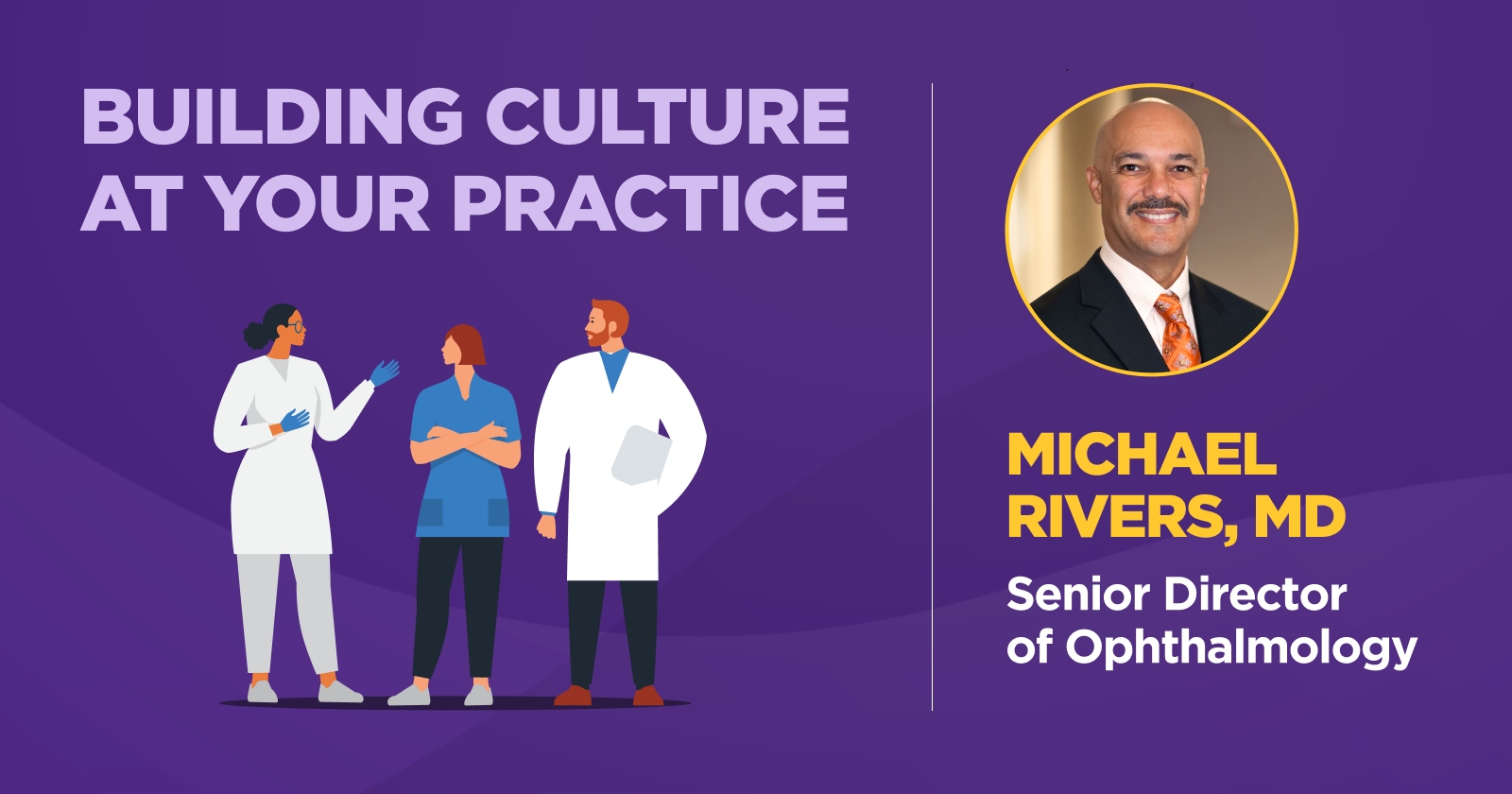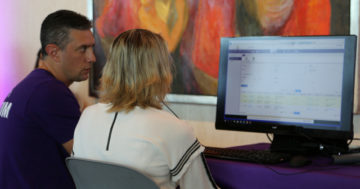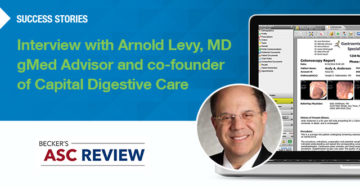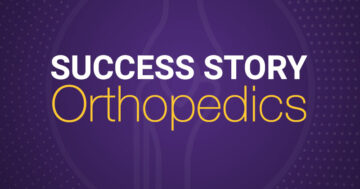Our Senior Medical Director of Ophthalmology Says If You Want to Reduce Attrition, Build Culture

Dr. Michael Rivers explains how culture can help develop greater staff engagement and satisfaction
Staffing concerns aren’t limited to any specialty, practice size or geography. Physicians may find that hiring and maintaining the staff needed to meet demand is more challenging than ever. Here, Dr. Michael Rivers, senior medical director at ModMed®, reveals a solution that may help your practice attract and retain high-quality staff: Build a stronger culture.
Some of the factors driving healthcare worker shortages may be outside a physician’s control. That’s because staffing challenges are sometimes the result of a supply-demand imbalance.
Demand for providers is high. The population is rapidly growing. A large portion of the population is aging, requiring more healthcare than before. As medical science advances, the number of services that providers can offer to help has also increased.
On the supply side, economic and social change, accelerated by the COVID-19 pandemic, has created a shift in values. As in many other industries, qualified healthcare providers expect more from their employment — fair pay, promotional paths, work-life balance and on-the-job engagement, including a sense of inclusivity and belonging.
These values are markers of your practice’s culture. If you can consistently offer a workplace that meets these values, you’re more likely to develop staff that likes where they work and stays with you for a longer period of time.
The following is excerpted from an interview with Dr. Michael Rivers and represents his opinions and experiences and not those of ModMed.
ModMed: Dr. Rivers, thank you for joining us. In your experience, what are the greatest challenges to developing an effective company culture?
Dr. Rivers: There are so many economic changes that have occurred in healthcare and more are on the way with the evolution of value-based care.
One aspect of economic change is how physicians handle it. Profitability may not be higher, but do you continue to deliver adequate raises that cover cost-of-living increases and reasonable benefits to your staff? If doctors have no idea culture is important, then they’ll basically fire a few employees and decrease salaries.
This can create staffing risk, especially when medical practices are run by private equity companies, because private equity is usually much more interested in the bottom line than doctors. Getting rid of expensive employees is an easy way to make profit-loss worksheets look better.
This is where culture is really important, because, otherwise, a lot of complicated things can start happening.
Busy technicians with busy doctors start to feel extraordinary stress. They worry about less expensive hires not pulling their weight, but those people are usually new and can’t be expected to perform at the same level as an experienced staff member, especially under stress. They’re thinking about things like getting out on time to manage childcare or other personal matters. There can be a cultural breakdown very quickly.
It can result in a downward spiral, where you’re looking for short-term financial gains to offset lower profitability or because you want to resell a practice in a short period of time, but it doesn’t make for any long-term stability.
Good culture requires recognizing people’s value. If you’re making them work harder over longer hours or for less money, you’re not supporting them. Staff are less likely to stay at medical businesses where they don’t feel supported.
ModMed: What about social changes? How do those weigh on culture?
Dr. Rivers: Team-building can be challenging against a backdrop of so much social change. Beyond the impact of the pandemic, practices may be largely staffed by digital natives who are used to staying connected using devices and the internet. When I was in medical practice, I’d notice that staff weren’t socializing in break rooms during lunch hours anymore. They’re on their phones.
When your sense of connection exists mostly outside of your job, it can be hard to build culture. It falls to practice managers and physicians to develop a culture that engages staff and keeps them interested in collaboration.
ModMed: How exactly can practices achieve that level of engagement in a digital age?
Dr. Rivers: There is one solution that we came up with that worked very well: Engage staff more directly in patient care. Invite them into the exam room.
There are already things for them to do in the room, but there can be a real barrier for some doctors who feel that exam space is sacrosanct. They feel that you shouldn’t invite someone else in.
But, to me, that was a great opportunity to have staff become involved and learn more. If you start to bring folks into that space, in a controlled way, they start to understand what kinds of conversations you’re having with patients as a doctor. They learn so much. They start to feel integrated into the care team and develop a responsibility to the patient.
Then, all of a sudden, the clinical staff are very engaged. In my experience, the technical staff would preferentially be part of the team in the exam room. It made a difference for them and for the patients, who had another person to help them with questions when the doctor was busy.
As a physician, you can do these things without abdicating responsibility for the patient’s care. In fact, you’re making for a more holistic conversation with the patient. It’s all a positive thing for culture.
ModMed: What can you tell physicians and practice managers about how ModMed develops culture? Are there any approaches you believe can apply at different size practices and clinics?
Dr. Rivers: ModMed is incredibly transparent with its employees. We have a function every month called First Friday, where the executive team invites every employee to a session. In those sessions, leadership is very transparent about what they’re thinking, what their focus is, and what they think the company needs to do.
That level of transparency can happen at a medical practice, too. Sometimes, physicians are sure that their decision is the only decision — especially surgeons, because that is so true in the operating room. Management skills of the operating room differ from team-building skills needed to build culture and retain staff.
If you want an employee to stay with you for several years, you can expect that they want some level of transparency into your business model. They want to know about your growth plans, how you plan to fill gaps in staff, and how those plans may include promotional paths for them. Staff can have additional opinions on how to grow the practice, which can be helpful to the business.
From a cultural perspective, physicians can develop their management skills to allow more discussion of certain elements of the practice, including requesting input from staff on plans, ideas or insights. It’s all about making them feel valued.
ModMed: One positive aspect of working at ModMed is its variety of Employee Resource Groups (ERGs). These groups support diversity and let staff connect and collaborate around common identity, but they tend to work best at larger companies where ERG membership numbers can be meaningful. What can small and mid-sized practices do to encourage achievement for diverse staff members?
Dr. Rivers: There’s absolutely no question that a diverse medical business is a stronger medical business. It’s important to recognize just how much diversity exists, because, otherwise, it can be very challenging for smaller or mid-sized practices to align individuals with the appropriate resources.
Even in geographic areas that don’t have greater racial or ethnic diversity, you can define diversity in a number of ways: origin or geographic background, religion, language, education, dietary choices. Physicians care for diverse groups of patients, and a diverse care team can help meet their needs.
I’m the president of mmUnity, an employee resource group that strives to challenge cultural bias at ModMed and beyond. We formed Unity in the middle of 2020, because our executive leadership team felt personally responsible for doing something in response to all the national chaos that was going on and the heightened visibility of the Black Lives Matter movement. For a large company like ModMed, this resource is incredibly important to our culture.
Even smaller medical practices can embrace diversity. Language can be a huge barrier for patients, and having an employee who can translate for patients can lead to better patient care, for example. I valued racial and geographic diversity within my medical staff, who could help me understand some of the challenges my patients faced that were outside my personal experience.
ModMed: What kind of frameworks do you think practices should have in place to prevent, spot and reverse burnout? What can you tell us about how your answer may have changed compared to a few years ago?
Dr. Rivers: A challenge for many medical practices is that more and more patients are coming in, as the population ages. Also, as medical science continues to improve, new treatments continue to be offered. Regulatory updates may increase demand for services. All of these factors put pressure on clinical medicine as a whole to be more efficient.
This can lead to staff burnout. This is where culture can come into play. Paying attention to staff and understanding their needs can help develop a more enthusiastic clinical care team. Using technology can be especially helpful in supporting medical staff. Automating front desk tasks such as making appointments or refilling prescriptions can free up the staff to spend more time with patients at checkout.
Culture then becomes a necessary companion to automation. Technology and automation can solve the volumetric problems of dozens of patients a day, but they cannot solve the problems of human relationships on the job. Culture does that.
Ready to rethink your staffing strategy? Start here.
About Michael B. Rivers, MD
Dr. Michael Rivers is the senior medical director of ophthalmology at ModMed. In this role, he helps ModMed evolve the ophthalmology platform by combining his years of experience as a board-certified ophthalmologist and retina surgeon with his expertise in implementing and using the EMA EHR system at the Retina Group of Washington (RGW). Michael speaks with physician users, listens to their needs and communicates them to the development, customer success and other teams at ModMed.
Michael was a practicing ophthalmologist, partner and board member at RGW in Washington, DC, from 1991 until 2017. In addition, he was a surgical retina and vitreous fellow at the University of Iowa Hospitals and Clinics from 1989 to 1991.
No stranger to the intersection of technology and medicine, while he was a resident Michael wrote a computer database to help automate his clinic and manage patient information electronically. He is passionate about helping doctors be better doctors by diminishing the time and effort needed to run the business, and rather spend more time with patients.
The Georgetown Ophthalmology Department has honored Michael twice as Teacher of the Year. In addition, RGW recognized him for his exceptional efforts with the transition to their EHR system.
Michael obtained his undergraduate degree in chemistry from Princeton University and was elected to join Sigma Xi, the national scientific research honor society, and earned his MD from Weill Cornell Medical College. He completed his residency in ophthalmology at The New York Hospital Department of Ophthalmology.
This blog is intended for informational purposes only and does not constitute legal or medical advice. Please consult with your legal counsel and other qualified advisors to ensure compliance with applicable laws, regulations, and standards.


